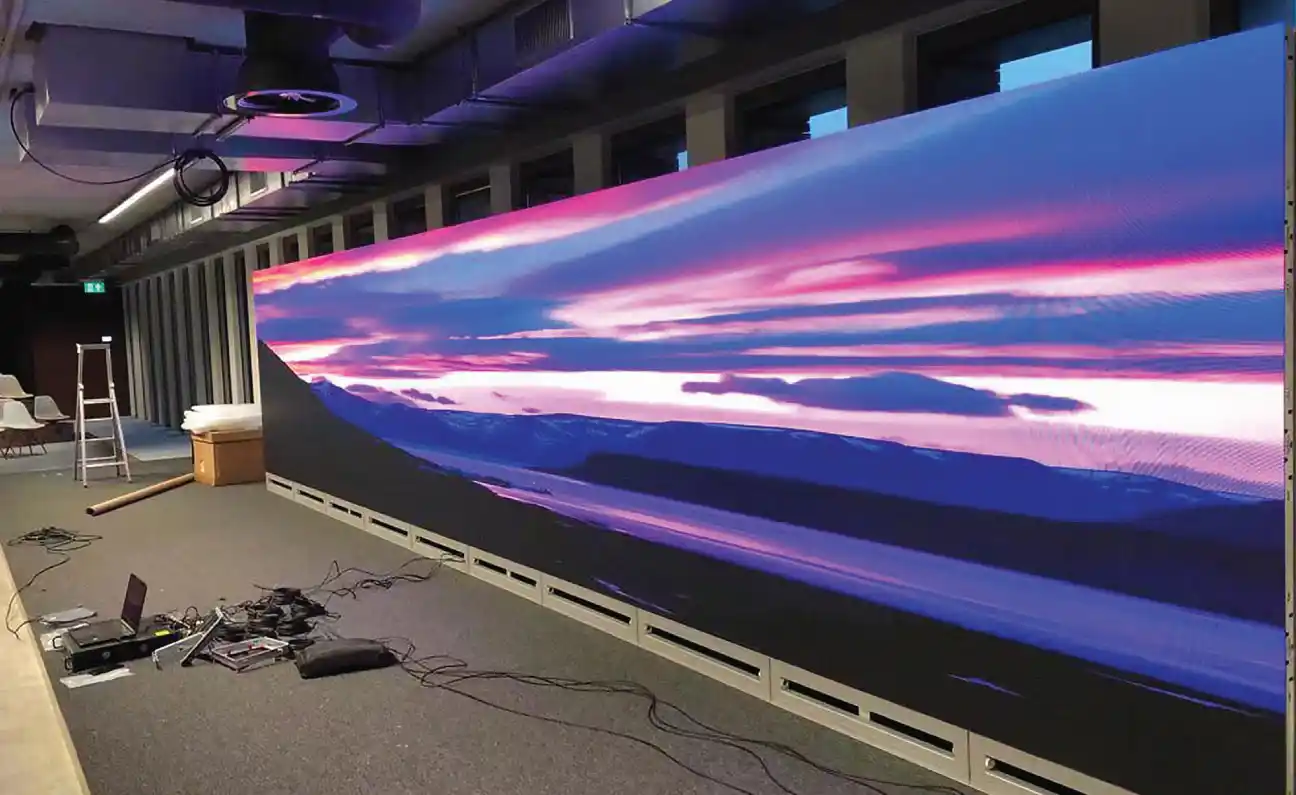LED displays have become an essential component of modern visual communication, powering everything from digital signage in retail environments to large-scale video walls at concerts and sporting events. Despite their robust design and high performance, these systems can encounter a variety of technical issues that impact functionality and visual quality.
Understanding how to effectively diagnose and resolve common problems is crucial for system integrators, maintenance engineers, and end-users alike. This article presents a comprehensive breakdown of key troubleshooting strategies, drawing on industry best practices and real-world experience from leading LED display manufacturers.

Before diving into specific troubleshooting methodologies, it’s important to understand the basic components that make up an LED display:
LED Modules: The core visual units responsible for light emission.
Power Supply Units (PSUs): Deliver consistent voltage to individual modules.
Control System: Includes sender and receiver cards, managing data transmission.
Cabling and Connectors: Handle electrical and data signals between components.
Thermal Management System: Includes fans, heat sinks, and ventilation mechanisms.
Software & Firmware: Control system operations and image processing logic.
Each of these elements can be a potential source of failure, making structured diagnostics essential.
Power-related failures are among the most frequent causes of LED display malfunctions. Begin by checking all AC power connections for looseness or corrosion. Use a multimeter to measure input voltage stability—especially critical in outdoor installations exposed to weather extremes. Overheated or damaged power modules should be replaced immediately, and consider implementing voltage stabilizers for enhanced protection.
Dead pixels or clusters can significantly degrade visual output. To address this, run pixel mapping software to identify faulty regions. Test individual modules and inspect driver ICs for connection issues. Data line integrity should also be verified, particularly in modular LED walls. Regular preventive maintenance has been shown to reduce pixel failure rates by up to 60% in commercial settings.
Color mismatches across panels often stem from calibration drift, signal interference, or outdated firmware. Utilize professional colorimeters to recalibrate the display and ensure uniformity. Check signal cables for damage or poor shielding, and verify that video processor settings align with the control system’s configuration standards.
Image distortion or abnormal display behavior is typically related to signal integrity. Confirm that your HDMI, DVI, or fiber inputs are secure and undamaged. In some cases, adjusting the refresh rate or rebooting the control system can restore clarity. Upgrading to shielded Cat6 or fiber optic cabling may be necessary for long-distance installations prone to electromagnetic noise.
Inconsistent brightness levels can occur due to uneven power distribution or sensor malfunctions. Adjust brightness parameters through your control software, and test ambient light sensors for accuracy. Consider upgrading dimming controllers for finer adjustments, especially in dynamic lighting conditions. Newer technologies like GOB (Glue-on-Board) offer improved brightness uniformity for challenging environments.
Data transmission errors can cause partial or total screen blackouts. Inspect RJ45 connectors and network switches for physical damage or loose connections. Verify IP configurations and update communication protocols as needed. For mission-critical applications, implementing redundant data paths ensures continuous operation even during cable faults.
Physical damage to cabinets, modules, or mounting hardware can affect both aesthetics and safety. Carefully examine cabinet alignment, module interconnections, protective coatings, and securing brackets. Flexible LED screens are particularly useful in mobile or temporary setups, offering greater resistance to impacts and vibrations.
Overheating remains a top cause of early LED failure. Regularly check fan operations and heat sink conditions. Monitor ambient temperature and airflow around the installation site. Proper thermal management can extend the lifespan of LEDs by 30–40%, especially in outdoor or enclosed environments.
Outdated or corrupted software can lead to erratic behavior or loss of control. Regularly apply firmware updates and software patches. Ensure that drivers remain compatible with operating systems and that backup configurations are available for quick recovery. Always verify the authenticity of downloaded files to avoid malware threats.
Proactive care is the most effective way to minimize downtime and prolong system life. Implement a scheduled maintenance routine that includes:
Monthly visual inspections
Quarterly electrical testing
Biannual professional servicing
Annual full-system recalibration
Such measures have been proven to reduce emergency repairs by up to 75%, according to reports from major LED solution providers.
While many common issues can be resolved in-house, complex installations—such as high-resolution LED video walls, transparent LED displays, or custom-shaped structures—require specialized expertise. Certified technicians from reputable manufacturers like EagerLED can provide advanced diagnostics, customized repair solutions, warranty validation, and performance optimization services.
Troubleshooting LED displays goes beyond simple fixes—it's a technical discipline that combines electronics, software, and environmental engineering. By understanding system architecture and applying systematic diagnostic methods, you can maintain optimal visual performance and operational reliability. Whether you're managing a single indoor display or an entire outdoor advertising network, mastering these techniques ensures efficient problem resolution and extended system longevity.
For organizations seeking turnkey support, partnering with experienced manufacturers is key to ensuring both immediate repairs and long-term technical guidance.
Hot Recommendations
Hot Products
Get a Free Quote Instantly!
Talk to Our Sales Team Now.
If you are interested in our products, please contact us promptly
Reach out to our sales team to explore customized solutions that perfectly meet your business needs and address any questions you may have.
Email Address:info@reissopto.comFactory Address:Building 6, Huike Flat Panel Display Industrial Park, No. 1, Gongye 2nd Road, Shiyan Shilong Community, Bao'an District, Shenzhen city , China
whatsapp:+8615217757270